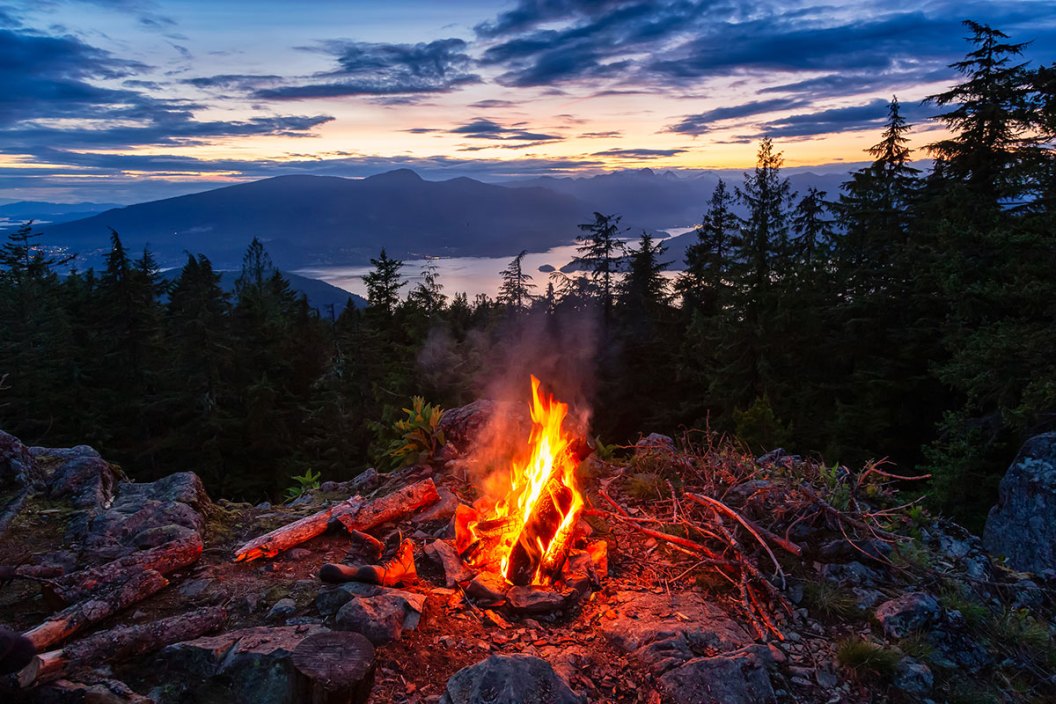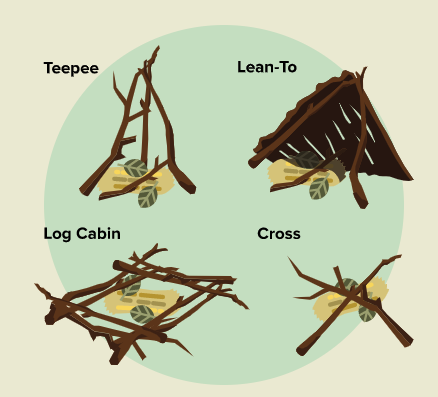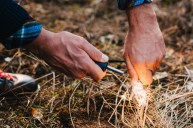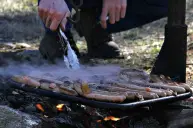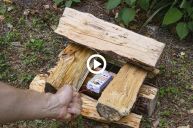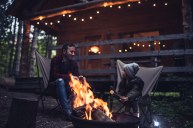Whether you're car camping, backpacking, or simply want to be prepared for survival, knowing how to build a fire is a vital skill for anyone that spends time in the outdoors.
It is one of the basics every outdoorsman should know. Knowing how to start a fire from scratch is great not only for ambiance and warm meals, but for the fact that it could literally save your life. But how to build a fire is about more than just if you can light your pile of kindling and keep it ablaze—it's also about knowing where to safely build a fire and how to contain it in order to prevent your campfire from spreading into a wildfire.
Truly though, watching a campfire that you built and kept alive burn in the fire pit against a beautiful backdrop outside is a proud moment for any outdoorsman or woman.
How to Build a Fire at Camp
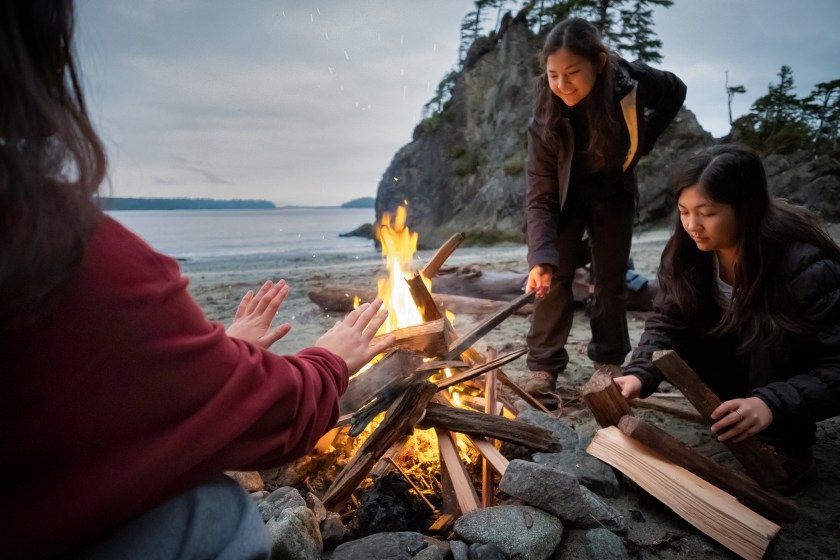
Getty Images, PamelaJoeMcFarlane
Let's be clear: When we talk about how to build a campfire, we're not talking about driving up to your favorite campsite, throwing a half-cord of Doug fir in the fire pit, dumping unleaded gas on it, and sending a roaring inferno up to the stratosphere.
That strategy is effective, but not practical either for a walk-in backcountry site or simply as a skill-building practice.
We're talking about learning how to build a fire properly, from scratch, in a way that can be useful for years to come.
Most important, before you start building a fire, it's crucial to know whether fires are permitted where you are, especially during fire season. Then, make sure you know the local ordinances in regards to bringing in your own firewood or collecting from nearby.
And of course, know and practice basic campfire safety steps, so that a nice camping trip doesn't turn into a serious wildfire threat.
But after a basic safety and regulation check, there's nothing left but to build.
Here's how to build a campfire the right way.
1. Gather fuel.
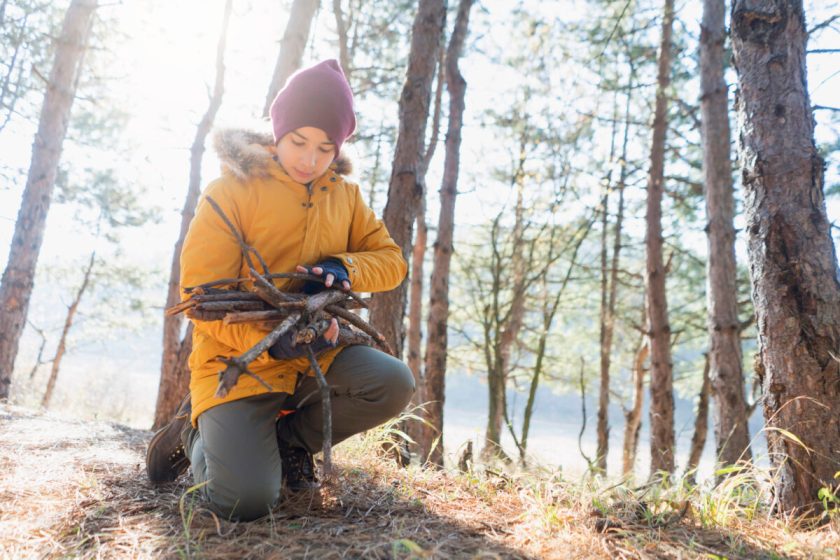
Getty Images, SrdjanPav
You have two options for how to find firewood: You will either buy it in bundles before you arrive at your campsite, or you'll have to gather firewood via what's available nearby.
If you're bringing in outside firewood, you want to buy it where you burn it—that is, buy firewood at the campground's general store, a near-by gas station, or a local stand along the rural highways that you travel to get to your destination. That way you aren't transporting invasive bugs and other species into the local forest.
If you plan on collecting wood, be sure to check the land regulations before you go. On National Forest land, for example, you can collect, but only "dead and down" wood. On any land, be sure to use leave no trace principles and never cut live trees or branches down as you collect from the surrounding area.
Fire-starting works best with dry wood—the drier the better. Skip wet wood.
When it comes to gathering or choosing a pre-cut bundle, there are three types of fuel you'll want: tinder, kindling, and firewood. Tinder is your firestarter. Kindling is smaller pieces of wood that will ignite quickly and keep your initial fire going. Firewood is, of course, your larger fuel and main material that's going to sustain your fire.
2. Make a fire ring.
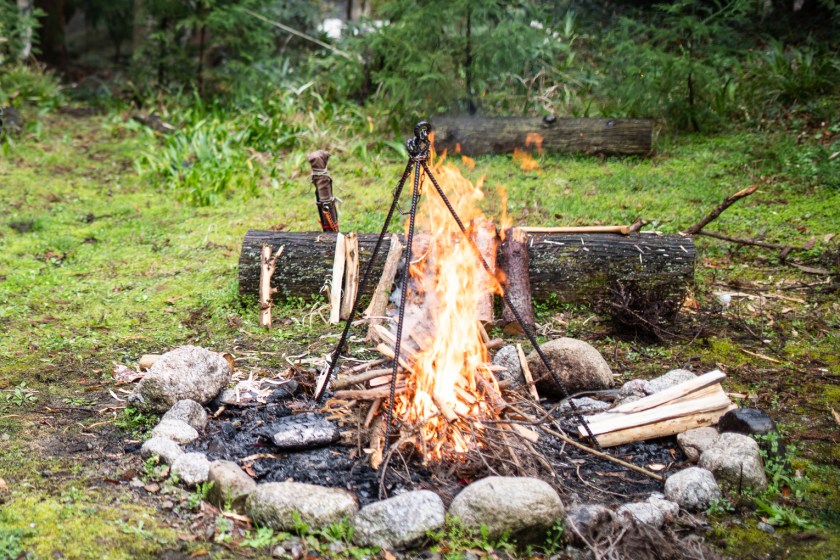
Getty Images, petesphotography
Using a fire ring is crucial to proper fire safety, as it prevents your flames and embers from spreading and minimizes damage to the earth.
If you're at a developed campground, always use the existing fire ring. If you're in the backcountry or dispersed camping on BLM land, there is a good chance that a previous camper left behind a fire ring. If so, always use what's already there to minimize unnecessary damage to the land.
If there is no fire ring, choose a spot that's open and away from any brush, leaves, dry grass, or pine needles (all highly flamable). Then, clear away down to the bare soil in what will be your ring, as well as in a five-foot radius around the pit. Next, gather appropriately-sized river rocks or stones and arrange them in an 8 - 12 foot circular shape around the center of bare soil. This will all keep your fire contained and prevent it from spreading.
3. Add tinder to the middle of the fire ring.
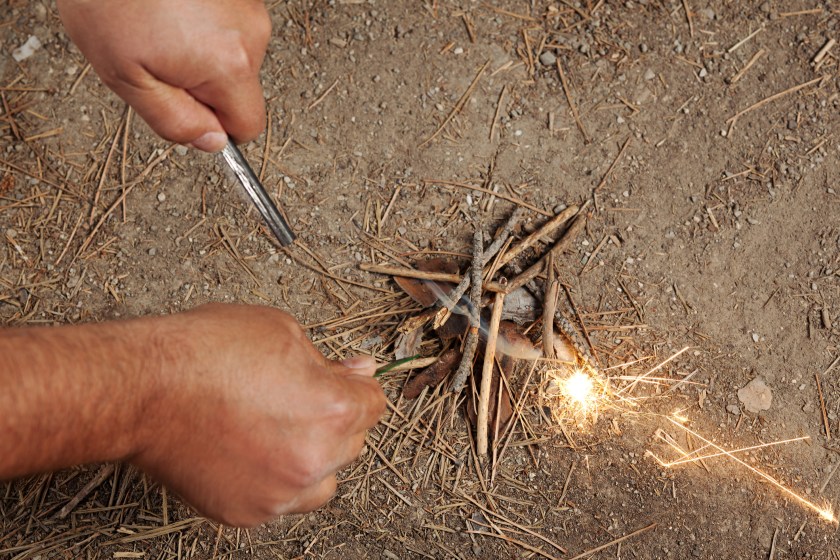
Getty Images, Lebazele
Place your tiniest material in the center of your fire ring. This could be wood shavings, bark chips, small twigs, small pieces of newspaper, dried leaves, pine needles, dried out lichen, dry grass, or even pine cones. (Pro tip: Dried cones from a Ponderosa Pine make killer tinder.)
You can also purchase a commercial firestarter or use a homemade classic like cotton balls and petroleum jelly. Carry this additional tinder in a Ziploc bag to keep it dry.
4. Pick your campfire shape.
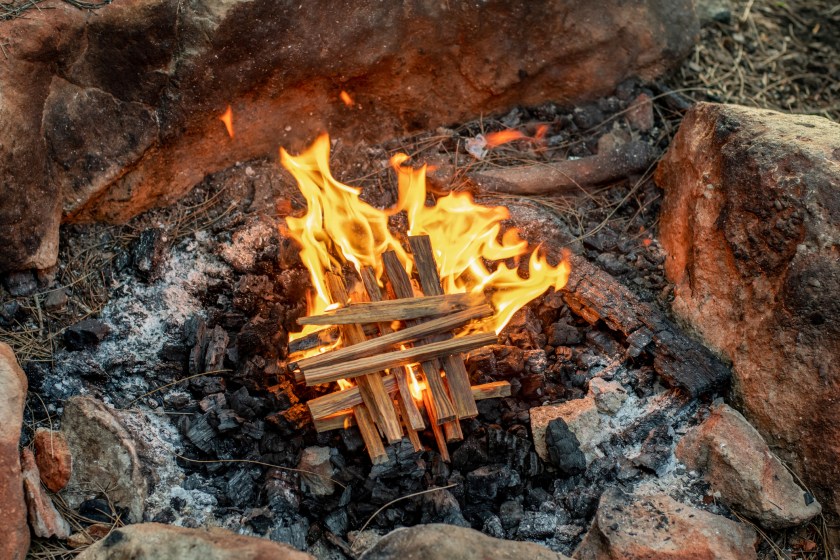
Getty Images, aria Nipot
Building a reliable fire is an art: The idea is to arrange the kindling and larger pieces of wood to allow oxygen to flow and sustain your fire. Fire requires three things: oxygen, heat, and fuel. In wildland firefighting training, we referred to this as the "fire triangle."
If you don't allow enough spacing in your fuel, you take out the oxygen leg of the triangle. You will wind up with the familiar wafts of trailing smoke after your fire has gone out for the thirteenth time.
We're turning to the most trusted source for the best way to craft a reliable campfire: Smokey the Bear points to four main forms for arranging your fuel wood (above).
The teepee fire, lean-to fire, log cabin fire, and cross technique all create good air flow and are easy to build up to a sustainable campfire. While the tipi is the best known, I find that the log cabin is actually the easiest to build and most reliable for air flow.
For each, you want to arrange the larger kindling around your tinder, but one of these four forms provides the best oxygen flow.
5. Light your fire.
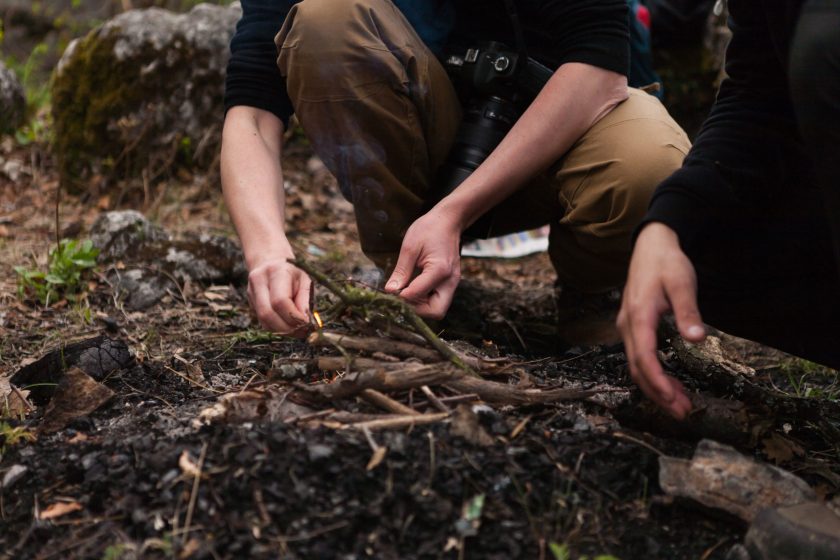
Light the tinder with a candle lighter or waterproof match.
As one of the Mountaineers Ten Essentials, you should always carry a second lighting source along with your primary. For instance, carry a lighter, flint and steel system, or a magnesium fire starter along with your matches.
You want the tinder to catch fire first, preferably in the center of the fire.
6. Add more fuel and air.
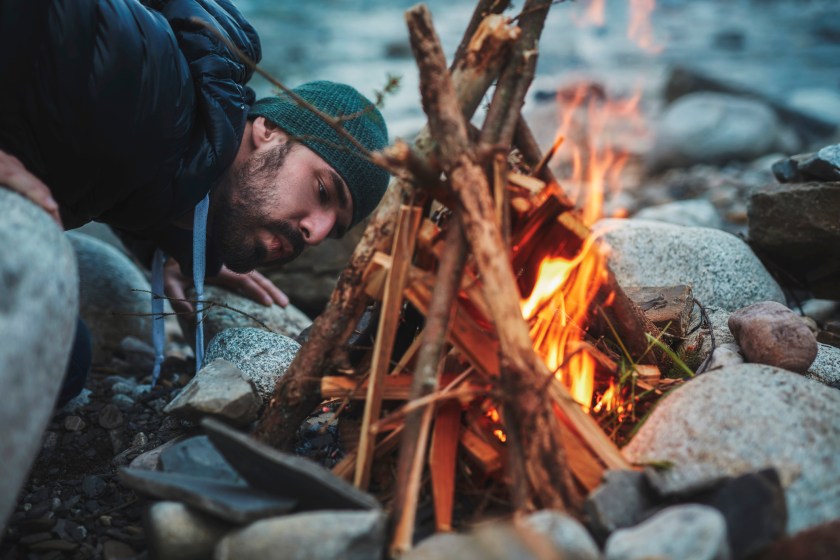
Getty Images, janiecbros
Once the tinder has caught fire, you want to add more tinder and blow at the base to help the fire grow. Once the fire has grown a bit, add more kindling. After a minute, add a couple pieces of small firewood.
Keep adding firewood periodically for the duration of your fire.
And that's it!
Every time you want a campfire, it's an opportunity to practice this basic-but-crucial survival skill. Very quickly, it becomes instinct and you can start a fire safely more quickly and with less frustration.
NEXT: PULL START FIRE: THIS $5 GADGET STARTS A CAMPFIRE WITH THE PULL OF A STRING
